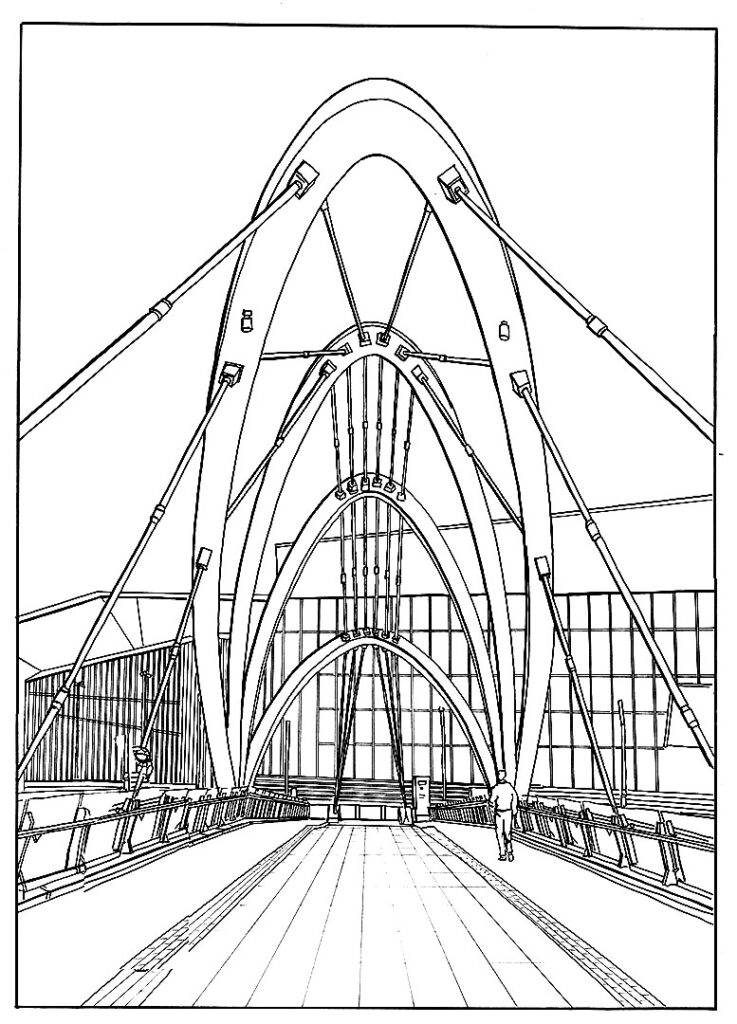
Seafarers Bridge Melbourne
Seafarers Bridge, an iconic structure in the heart of Melbourne, Australia, is a testament to the city's rich maritime history and its commitment to a vibrant future. Spanning the Yarra River, this pedestrian and cyclist bridge stands as a symbol of Melbourne's dedication to connectivity, art, and urban renewal.
Constructed in 2009, Seafarers Bridge replaced the older Webb Bridge, which was dismantled to make way for this modern masterpiece. The name, "Seafarers," pays homage to the sailors and maritime history that have played a pivotal role in Melbourne's growth. The bridge's design, a striking combination of steel, glass, and artistry, seamlessly blends the past with the present.
One of the most striking features of Seafarers Bridge is its unique design. The sweeping, arched structure rises elegantly above the Yarra River, providing a breathtaking view of Melbourne's skyline. At night, the bridge comes to life with its vibrant LED lighting, adding to the city's charm and creating a picturesque spectacle. The architectural prowess of Seafarers Bridge has made it an iconic element of Melbourne's modern landscape.
Seafarers Bridge is not just a visually stunning piece of architecture; it serves a vital purpose as well. Its primary function is to provide a vital link for pedestrians and cyclists between the bustling South Wharf and the Docklands precinct, facilitating easy access to various cultural, commercial, and entertainment venues. In a city known for its vibrant arts scene and numerous events, this connection is invaluable, fostering a sense of community and accessibility.
The bridge also incorporates a series of integrated public art installations, adding an element of culture and creativity to the infrastructure. Artist Nadim Karam's sculptures, titled "The Travellers," adorn the bridge, representing the city's diversity and the stories of its people. This infusion of art into urban design is characteristic of Melbourne, a city that values and celebrates artistic expression.
Seafarers Bridge has become a significant landmark for both locals and tourists. It symbolizes Melbourne's growth as a city and its commitment to preserving its maritime heritage while embracing the future. The bridge has not only improved transportation but has also acted as a catalyst for urban renewal, transforming the formerly industrial Docklands into a vibrant, contemporary neighborhood. This rejuvenation has breathed new life into the area, creating a dynamic and thriving community.
In conclusion, Seafarers Bridge in Melbourne stands as a testament to the city's forward-thinking urban planning and its appreciation for the past. With its striking design, integration of art, and crucial role in connectivity, this bridge has transcended its role as a mere structure and become a symbol of Melbourne's identity. It bridges the gap between history and modernity, connecting people and places, and continues to be a source of pride for the city, serving as a beacon of progress and inclusivity.
The most distinctive aspect of the bridge is its elegant, sweeping arch that spans across the Yarra River. This design choice not only provides an aesthetically pleasing appearance but also serves a practical purpose. The arch's curvature allows for the necessary clearance for boats and watercraft to pass beneath it, preserving the Yarra River's role as a navigable waterway. This thoughtful integration of form and function showcases Melbourne's commitment to creating infrastructure that seamlessly fits into the city's urban fabric.
The use of materials is another noteworthy design element of Seafarers Bridge. The structure predominantly consists of steel and glass, giving it a contemporary and futuristic appearance. The extensive use of glass not only allows for unobstructed views of the surrounding area but also provides a unique and transparent experience for pedestrians and cyclists crossing the bridge. This transparency creates a sense of openness and connection with the river and its surroundings, further enhancing the overall aesthetic appeal.
The bridge's lighting design is a spectacular feature that comes to life at night. A sophisticated LED lighting system illuminates the entire structure, transforming it into a breathtaking display of colors and patterns. This dynamic lighting design not only enhances the bridge's visual appeal but also contributes to the ambiance of the entire waterfront area. It has become a canvas for artistic lighting displays, providing an ever-changing, visually stimulating experience for those crossing the bridge and those observing it from a distance.
Seafarers Bridge seamlessly integrates public art installations into its design. The sculptures titled "The Travellers," created by Lebanese artist Nadim Karam, are a central part of the bridge's aesthetic. These whimsical, larger-than-life figures, with suitcases in tow, are an artistic representation of Melbourne's diverse and multicultural population. They celebrate the stories, journeys, and experiences of the city's residents, adding a layer of cultural richness to the bridge's design.
In summary, Seafarers Bridge's design is a harmonious blend of functionality, modernity, and artistry. Its distinctive arch, choice of materials, and the mesmerizing lighting display all contribute to its visual allure. The incorporation of public art installations further enhances the bridge's cultural significance. Seafarers Bridge is a testament to Melbourne's commitment to creating infrastructure that not only serves its practical purpose but also enriches the urban environment, offering a compelling example of the city's visionary approach to urban design and architecture.